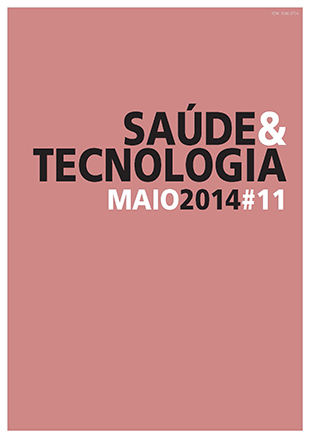Evaluation of DNA extraction methods and detection of genetically modified organisms in processed foods derived from corn
DOI:
https://doi.org/10.25758/set.964Keywords:
Residues transgenics, Legislation, Genetically modified maize, PCRAbstract
Given the advances in biotechnology cultivation of genetically modified crops, for example, maize (Zea mays) plants increased considerably in recent years. Although such technology presents proven benefits in relation to increased productivity and durability of food, the population still fears consuming genetically modified products. The objective of this study was to compare two protocols based on the use of CTAB and evaluate which is best for the extraction of DNA in processed food derived from maize. As well as identifying two of the most common transgenic residues in foodstuffs derived from maize: Cry1Ab and Cry1F. Para this, 14 samples derived from maize were evaluated using two different protocols for DNA extraction and detection of transgenic events conducted by qualitative PCR. Among the samples, 57% resulted in a positive for the detection of both transgenic corn events evaluated.
Downloads
References
Cardarelli P, Branquinho MR, Ferreira RT, Cruz FP, Gemal AL. Detection of GMO in food products in Brazil: the INCQS experience. Food Control. 2005;16(10):859-66.
Dinon AZ, Arisi AC. Screening maize food products sold in Brazil from 2005 to 2007 for the presence of cryIA(b) gene and P35S promoter. Int J Biosafety Biosecur. 2010;1(1).
Brasil. Ministério da Justiça. Portaria nº 2658, de 22 de dezembro de 2003. Regulamenta o emprego do símbolo no rotulo dos produtos transgênicos. Diário Oficial [da] República Federativa do Brasil. 2003 Dez 26.
Ferrari CS, Valente LL, Brod FC, Tagliari C, Sant'Anna ES, Arisi AC. Evaluation of polymerase chain reaction and DNA isolation protocols for detection of genetically modified soybean. Int J Food Sci Technol. 2007;42(10):1249-55.
Barros NE, Oliveira EM, Marin VA. Aplicabilidade da metodologia de reação de cadeia polimerase em tempo real, na determinação de organismos geneticamente modificados em alimentos [Applicability of the real-time polymerase chain reaction based-methods in quantification of genetically modified organisms in foods]. Rev Nutr. 2008;21(1):85-92. Portuguese
Faustino, R Sousa A, Loureiro M, Mendes L, Brito M. Detecção e quantificação de soja geneticamente modificada em gêneros alimentícios, comercializados em Portugal, para consumo humano [Detection and quantification of genetically modified soy in foodstuffs, commercialized in Portugal, for human consumption]. Saúde & Tecnologia. 2009;(3):19-21. Portuguese
Jouanin L, Bonadé-Bottino M, Girard C, Morrot G, Giband M. Transgenic plants for insect resistance. Plant Sci. 1998;131(1):1-11.
Mota AA. Transgenia no Brasil: eventos autorizados e cultivares registrados [Monograph]. Brasília: Faculdade de Agronomia e Medicina Veterinária, Universidade de Brasília; 2011.
Ferreira ME, Grattapaglia D. Introdução ao uso de marcadores moleculares em análise genética. 2ª ed. Brasília: Embrapa-CENARGEN; 1996.
Lipp M, Brodmann P, Pietsch K, Pauwels J, Anklam E. IUPAC collaborative trial study of a method to detect genetically modified soybeans and maize in dried powder. J AOAC Int. 1999;82(4):923-8.
Gürakan GC, Aydin G, Yilmaz R. Qualitative detection of maize (Bt11) in food and feed sold commercially in Turkey by PCR based methods. Ind J Biotechnol. 2011;10:143-6.
Mazzara M, Foti N, Price S, Paoletti C, Van den Eede G. Event-specific method for the quantitation of maize line TC1507 using real-time PCR. Brussels: European Commission; 2005.
Cobaiashi DM. Avaliação da metodologia de detecção e quantificação por PCR em tempo real de organismos geneticamente modificados em alimentos: aspectos de produção, processamento e amostragem [Dissertation]. São Paulo: Faculdade de Ciências Farmacêuticas, Universidade de São Paulo; 2012.
Costa TE. Detecção de transgênicos em alimentos utilizando a técnica multiplex-PCR [Dissertation]. Rio de Janeiro: Instituto Nacional de Controle de Qualidade em Saúde, Fundação Oswaldo Cruz; 2008.
Teare JM, Islam R, Flanagan R, Gallagher S, Davies MG, Grabau C. Measurement of nucleic acid concentrations using the DyNA Quant and the GeneQuant. Biotechniques. 1997;22(6):1170-4.
Anklam E, Gadani F, Heinze P, Pinjnenburg H, Van den Eege G. Analytical methods for detection and determination of genetically modified organisms in agricultural crops and plant-derived food products. Eur Food Res Technol. 2002;214 (1):3-26.
Ahmed FE. Detection of genetically modified gnisms in foods. Trends Biotechnol. 2002;20(5):215-23.
Branquinho MR. Estudo da quantificação de soja geneticamente modificada em alimentos pela técnica da reação em cadeia pela polimerase em tempo real: desenvolvimento de método evento específico [Dissertation]. Rio de Janeiro: Instituto Nacional de Controle de Qualidade em Saúde, Fundação Oswaldo Cruz; 2010.
Greiner R, Konietzny U. Presence of genetically modified maize and soy in food products sold commercially in Brazil from 2000 to 2005. Food Control. 2008;19(5):499-505.
Downloads
Published
Issue
Section
License
Copyright (c) 2022 Saúde e Tecnologia

This work is licensed under a Creative Commons Attribution-NonCommercial-NoDerivatives 4.0 International License.
The journal Saúde & Tecnologia offers immediate free access to its content, following the principle that making scientific knowledge available to the public free of charge provides greater worldwide democratization of knowledge.
The journal Saúde & Tecnologia does not charge authors any submission or article processing charges (APC).
All content is licensed under a Creative Commons CC-BY-NC-ND license. Authors have the right to: reproduce their work in physical or digital form for personal, professional, or teaching use, but not for commercial use (including the sale of the right to access the article); deposit on their website, that of their institution or in a repository an exact copy in electronic format of the article published by Saúde & Tecnologia, provided that reference is made to its publication in Saúde & Tecnologia and its content (including symbols identifying the journal) is not altered; publish in a book of which they are authors or editors the total or partial content of the manuscript, provided that reference is made to its publication in Saúde & Tecnologia.







